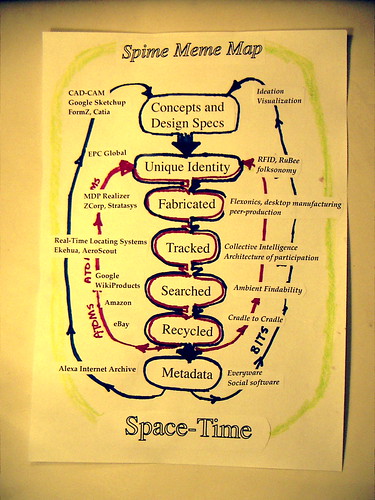We noticed an interesting article on the Cisco blog, where author Dennis Mancini postulates the future of Spime technology. Spime? Proposed by author Bruce Sterling, a Spime is “a type of technological device that, through pervasive RFID and GPS tracking, can track its history of use and interact with the world,” according to Wikipedia.
While an exploration of Spimes is way beyond the scope of Fabbaloo, the idea is that they are self-locating and recording devices. They record a history of their situation throughout their usable lifetime until they are turned back into recycled atoms and their gathered metadata is harvested for analysis that will improve future generations of spimes.
So what does this have to do with Fabbing? Mancini suggests that 3D printers are a logical place for Spimes to emerge. He says: “Spimes are the logical output of a logistics infrastructure based on now affordable fabbers.”
This is indeed what Sterling suggests, as “Fabrication” is a fundamental step in his “Spime Meme Map”, which demonstrates a closed atom/information loop. It’s a conceptual way to look at object economics in a future of recycling and personal manufacturing.
We got thinking about this scenario, and wondered if this could be a possible distant future? Dark technovandals distribute secret code via botnet to millions of home 3D printing factories, and on command billions of tiny spimes flow onto the planet’s surface, ready to perform evil actions to the highest bidder?
We hope not. For now, we’ll stick with printing christmas ornaments and replacement lids. We’ll worry about that other stuff another day.
Maybe we’ll worry a lot.
(Image courtesy of Bruce Sterling)
Via Cisco Blogs and Bruce Sterling’s Understanding the Spime Flickr Set


